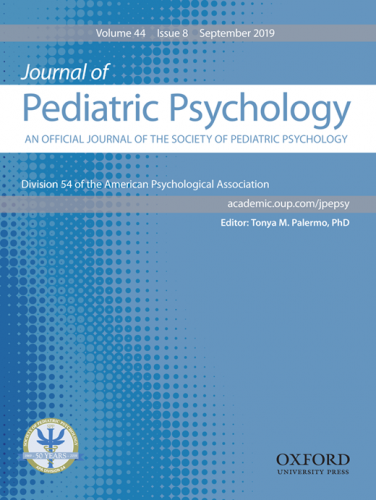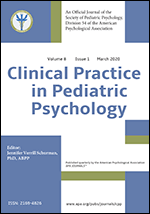Fact Sheet: Pediatric Inflammatory Bowel Disease
Inflammatory Bowel Disease (IBD) refers to a group of diseases, namely Crohn’s disease (CD) and ulcerative colitis (UC), which cause inflammation in different portions of the digestive system. CD can affect any part of the digestive system including the large and small intestine as well as areas above the small intestine, while UC usually affects only the large intestine (colon). The etiology remains unknown, yet it is believed that a combination of genetics and environment play major roles in the development of IBD.
Prevalence and Course
The incidence of pediatric IBD appears to be increasing worldwide and is estimated to be diagnosed in approximately 10 per 100 000 children in the United States. IBD with onset in childhood is associated with more extensive disease, greater disease activity, and a more complicated course than adult onset IBD.
IBD is a life-long chronic condition characterized by active periods (flares) and inactive periods (remission), and common symptoms include abdominal pain, diarrhea, bloody stools, fatigue, and weight loss. Symptoms and the frequency and severity of flares vary from person to person and may change over time.
Most people with IBD can be treated with medication and proper nutrition. No medication can cure IBD, but medication is used to reduce the frequency of flares and maintain periods of remission. In some patients who do not achieve remission with medication, surgery is considered.
Health and Psychosocial Consequences
Youth with IBD are at an increased risk for behavioral/emotional difficulties than healthy children, with depression rates up to 25%. Youth with IBD also report lower quality of life (QOL) and poorer social functioning in comparison to healthy youth.
Evidence-based Assessment
Domains of assessment with relevance to youth with IBD include QOL, social, emotional, school, and family functioning, self-management, and adherence. Some well-validated IBD-specific assessment tools are available to measure QOL (IMPACT-III) and disease severity (e.g., PCDAI, PUCAI).
Culture, Diversity, Demographic and Developmental Factors
Most youth diagnosed with IBD are Caucasian; however the prevalence of IBD has been increasing among African Americans. Studies that examine causes and differences in disease course of IBD in different ethnic groups are needed. Approximately 25% of patients with IBD present during childhood or adolescence and it is estimated that among children with IBD, 4% present before the age of 5 and 18% present before the age of 10.
Evidence-based Interventions
Some evidence-based interventions for youth with IBD exist. Data provides support for a cognitive-behavioral therapy intervention in improving symptoms of anxiety and depression, and maintaining these improvements. Data also supports the use of individually tailored behavioral intervention to improve adherence to oral medication among adolescents with IBD.
Resources
- Crohn’s and Colitis Foundation: The foundation is aimed at finding a cure for Crohn’s disease and ulcerative colitis, and offers education programs for patients and healthcare professionals, as well as supportive services for patients and families. www.crohnscolitisfoundation.org/
- The North American Society for Pediatric Gastroenterology, Hepatology, and Nutrition (NASPGHAN): The largest society in the world focused on research, education, clinical practice, and advocacy for pediatric digestive, hepatologic, and nutritional disorders. https://www.naspghan.org/
- GI Kids: The patient outreach and education effort of NASPGHAN, aimed at promoting awareness and research of pediatric digestive and nutritional disorders. https://www.gikids.org/
Author: Michelle Maddux, PhD
Date of last update: July, 2019
References
- Hommel, K.A., Greenley, R.N., Maddux, M.H., Gray, W.N., & Mackner, L.M. (2013). Self-management in pediatric inflammatory bowel disease: A clinic report of the North American Society for Pediatric Gastroenterology, Hepatology, and Nutrition. Journal of Pediatric Gastroenterology and Nutrition, 57(2), 250-257.
- Hyams, J.S., Ferry, G.D., Mandel, F.S., et al. (1991). Development and validation of a pediatric Crohn's disease activity index. Journal of Pediatric Gastroenterology and Nutrition, 12(4), 439-447.
- Mackner, L.M., Greenley, R.N., Szigethy, E., Herzer, M., Deer, K., & Hommel, K.A. (2013). Psychosocial issues in pediatric inflammatory bowel disease: Report of the North American Society for Pediatric Gastroenterology, Hepatology, and Nutrition. Journal of Pediatric Gastroenterology and Nutrition, 56, 449-458.
- Otley, A., Smith, C., Nicholas, D., et al. (2002). The IMPACT questionnaire: a valid measure of health-related quality of life in pediatric inflammatory bowel disease. Journal of Pediatric Gastroenterology and Nutrition, 35(4), 557-563.
- Rosen, M.J., Dhawan, A., & Saeed, S.A. (2015). Inflammatory bowel disease in children and adolescents. JAMA Pediatrics, 169 (11), 1053-1060.
- Szigethy, E., Bujoreanu, S, Youk, A., et al (2014). Randomized efficacy trial of two psychotherapies for depression in youth with inflammatory bowel disease. Journal of the American Academy of Child and Adolescent Psychiatry, 53, 726-735.
- Turner, D., Otley AR, Mack D, et al. (2007). Development, validation, and evaluation of a pediatric ulcerative colitis activity index: a prospective multicenter study. Gastroenterology, 133(2), 423-432.



